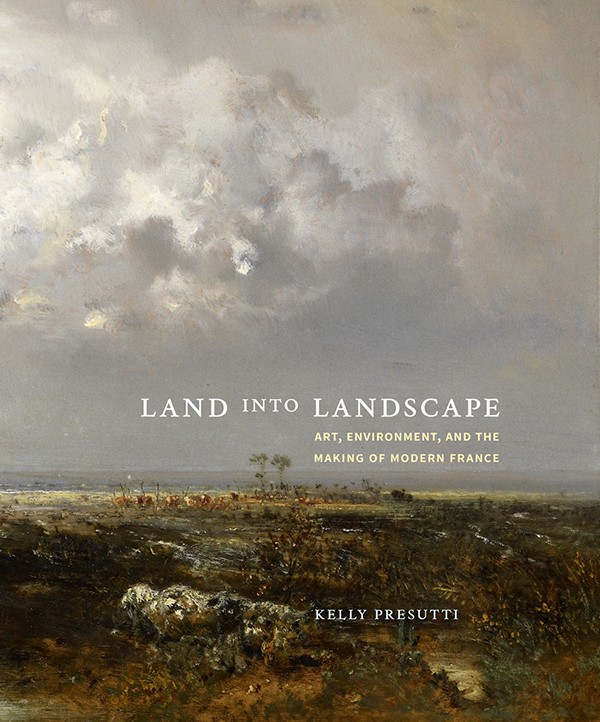In the 1880s, France established a government service dedicated to the restoration of the country's mountainous terrain, and each regional office was provided with a traveling camera.
Carried in a wooden backpack, the state-of-the-art equipment yielded an incredible archive of photographs, demonstrating the way art and administration influenced each other in France, said art historian Kelly Presutti, especially given the revolutionary upheavals that began in the late 18th century.
"When I looked at Paul Cézanne's 'Mont Sainte-Victoire' paintings after spending time with this material, I couldn't help but see how his artistic vision was inflected by this state intervention," said Presutti, assistant professor of history of art and visual studies in the College of Arts and Sciences.
Presutti examines the role that depictions of landscape - in paintings, photographs, prints, porcelain and maps - played in the formation of modern France in "Land into Landscape: Art, Environment, and the Making of Modern France." Telling the stories behind landscape images of mountains, seascapes, forests and wetlands by artists both well-known and obscure, Presutti considers the tension between a place and its representation, revealing how art contributed to the physical and symbolic shaping of France as it is today.
The College of Arts and Sciences spoke with Presutti about the book.
Question: Why did you organize the book's chapters around distinct landscape features: mountains, coasts, forests and wetlands?
Answer: The structure of the book emerged out of the objects and artworks I was studying. I was lucky to be able to spend a lot of time traveling around France, visiting small museums, libraries and archives, and looking at how landscapes appeared across a variety of media and in administrative documents. Landscape came to be one of the most popular subjects for visual representation in the nineteenth century, so there was a huge quantity of material to consider.
In working through the material, four landscapes - mountains, coasts, forests, and wetlands - repeatedly appeared as subjects of visual representation and in debates around land management. Each posed problems to the state in their own ways, and together they show just how much physical and symbolic work needed to be done in the making of a modern French landscape.
Q: How did technological advances in the 19th century change the ways in which the French saw their landscapes?
A: One of most exciting aspects for me was discovering new visual technology, like the teleiconograph. Invented in the 19th century, the teleiconograph was a combination telegraph and camera obscura that helped to see details at a distance. It was used in the study of mountains, which both artists and administrators complained were too large to be properly rendered or understood. Seeing techniques of visual representation move between different kinds of makers reveals the extent to which producing the French landscape was a collective endeavor.
Q: How were French government policies to preserve and restore land during the 19th century - a time of intense industrialization - tied to art?
A: There is a very clear example of the intersection between artistic practice and state preservation in the Forest of Fontainebleau, about 60 kilometers south of Paris. Painters who had taken to the landscape were concerned about ongoing industrialization, and they petitioned the state on behalf of the trees. The state responded by setting a small portion of the forest aside as an "artistic reserve," making it the first preserved landscape in France. Aesthetics played a part in making that landscape valuable, and art could change the way people saw their world.
What's harder to reckon with is how little area was preserved relative to the overall transformation of old-growth woods into timber factory across France. Further, given that the motivation for preservation was the forest's "beauty," what does this example mean for our environmental priorities today? What do we do with "unappealing" landscapes? This is something I address in the wetlands chapter - especially considering the negative connotations around swamps - and something I am continuing to work through in my writing on contemporary ecological art.
Kate Blackwood is a writer for the College of Arts and Sciences.







